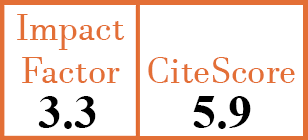Full Papers
Serum cytokine profiles in Takayasu's arteritis: search for biomarkers
F. Alibaz-Oner1, S.P. Yentür2, G. Saruhan-Direskeneli3, H. Direskeneli4
- Department of Internal Medicine, Division of Rheumatology, Marmara University, School of Medicine, Turkey.
- Department of Physiology, Istanbul University, Istanbul Faculty of Medicine, Turkey.
- Department of Physiology, Istanbul University, Istanbul Faculty of Medicine, Turkey.
- Department of Internal Medicine, Division of Rheumatology, Marmara University, School of Medicine, Turkey.
CER7613
2015 Vol.33, N°2 ,Suppl.89
PI 0032, PF 0035
Full Papers
Free to view
(click on article PDF icon to read the article)
PMID: 25436391 [PubMed]
Received: 23/05/2014
Accepted : 31/07/2014
In Press: 01/12/2014
Published: 26/05/2015
Abstract
OBJECTIVES:
Assessment of disease activity is one of the major difficulties in patients with Takayasu arteritis (TAK) during follow-up. To date, no biomarker is universally accepted to be a surrogate for active disease in TAK. In this study, we aimed to investigate levels of various pro-and anti-inflammatory molecules including serum granulocyte-macrophage colony-stimulating factor (GM-CSF), interleukin (IL)-6, IL-8, IL-10, IL-18 and IL-23 in patients with TAK.
METHODS:
The study included 51 patients (age: 40.6±12.2 years, F/M: 45/6) with TAK and 42 age- and sex-matched healthy controls (age: 38.1±7.4 years, F/M: 38/4). All patients fulfilled the criteria of the American College of Rheumatology (ACR). TAK patients were evaluated by physician`s global assessment (PGA; active/inactive) and ITAS2010 (Indian Takayasu Arteritis Clinical Activity Score) in terms of clinical activity in baseline and follow-up visits. Commercial enzyme linked immuno-sorbent assay (ELISA) kits were used for measurements of serum cytokine levels.
RESULTS:
At baseline, 21 (41.2%) patients were active according to PGA and 8 (15.7%) according to ITAS2010. Serum IL-6, IL-8 and IL-18 levels were significantly higher in patients with TAK, whereas GM-CSF, IL-10, IL-23 levels were similar to healthy controls. IL-8 significantly decreased in the follow-up, associated with a decrease of clinical activity, whereas IL-23 level significantly increased. When assessed by ITAS2010 active patients had significantly higher IL-18 levels.
CONCLUSIONS:
We found significantly increased IL-6, IL-8 and IL-18 levels in patients with TAK compared to healthy controls. Only IL-18 level was significantly higher in active patients assessed by ITAS2010. IL-18 was also the only cytokine in our study that correlated with CRP. These findings suggest that cytokines associated with neutrophilic, pro-inflammatory responses such as IL-6, IL-8 and IL-18 can be potential biomarkers for the assessment of disease activity in TAK and warrant further studies in larger series.


